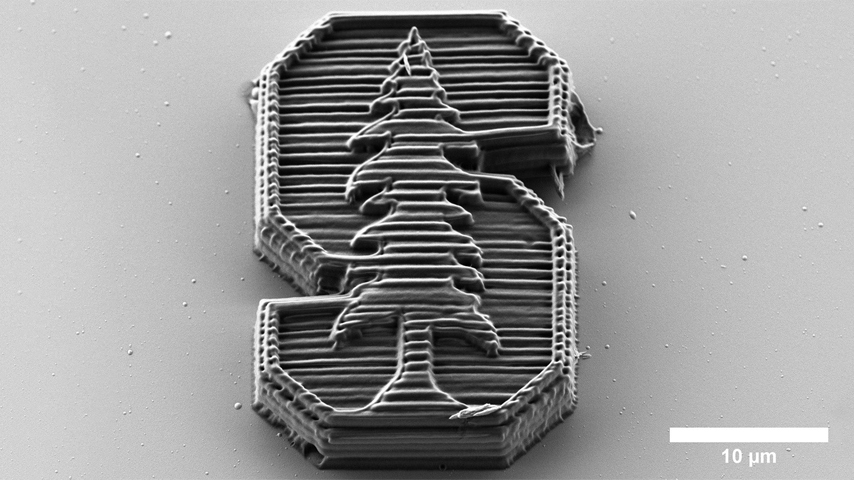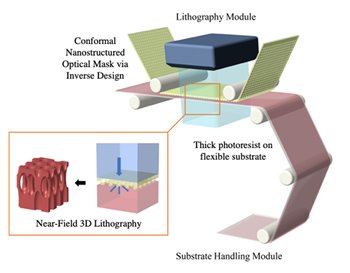Getting Closer to the Ability to 3D Print Tiny Structures
Getting Closer to the Ability to 3D Print Tiny Structures


Despite the many benefits to manufacturing and healthcare, the capability to print three-dimensional structures on the nanoscale hasn’t been realized yet. But research is advancing quickly.
But nanoscale 3-D printing is moving closer to becoming a reality thanks to the work of a number of specialized technologies and materials researchers.
These very small parts hold the promise of a multitude of uses, including cutting the weight of parts used in satellites and drones while maintaining their strength. Many manufactured objects, including industrial water filters, would function better and be lighter if they could include nano-sized parts.
And benefits aren’t limited to manufactured objects. In the medical realm, 3-D printed nano biomaterials are able to create scaffolding to grow human tissue outside the body—to name only one use.
New techniques
When it comes to the mass manufacturing parts on the nano scale, the technology is just not there, said Michael Cullinan, associate professor of mechanical engineering at the University of Texas.
Cullinan’s group is working on the bottleneck issue that could happen with nanoscale mass manufacturing. Backups happen because large numbers of complex nanoscale structures can’t be printed quickly. In 3-D printing, there is a tradeoff between the precision needed to create the object and the speed and scale at which the object can be made, Cullinan said.
But small objects can easily lose precision and take up too much time when mass produced, he added.
To speed up production, his team is experimenting with what’s called a metamask to mask parts of the object from the light that cures the material. What’s left when the mask is removed is the 3-D, cured object, Cullinan said.
This method is commonly used for larger-scale printing. The problem is regular masks won’t work for nanoscale objects because the light isn’t diffracted accurately around the masks. The team’s goal was to harness the diffraction to fit the process to the nanoscale.
Become a Member: How to Join ASME
The metamask is placed much closer to the material than usual, which creates holograms—3-D images of light—that have a thin structure. When the material is exposed to curative light, the light is diffracted around the holograms. Exposing the photocurable material using hologram, resulting in a solid, 3-D structure, Cullinan said.
Also adding to the speed of this method, users can create single structures with increased speed because the metamask allows the printing of different materials within a single structure.
New materials
With these new printing techniques will come new materials that can further the benefits of these nanoscale structures.
At Stanford University, researchers developed a new material that can be used to print minuscule lattices that are both strong and light. Their material can absorb twice as much energy as other 3D-printed materials of comparable density. It could replace larger, heavier-weight parts in products such as satellites, drones, and others where weight and energy absorption matter, said Wendy Gu, a Stanford assistant professor of mechanical engineering who was part of the project.
“So, it’s not just the 3-D structure, but also the material that provides very good protection,” Gu said in a statement.
The new material incorporated metal nanoclusters—tiny clumps of atoms, which are hardened by a chemical reaction initiated with laser light. The nanoclusters jump-start the chemical reaction, resulting in a material that is a composite of a polymer printing medium and metal, Gu said.
Biomedical 3-D printing at the nanoscale
In the healthcare field, the nanomaterials used for 3-D printing could better biologically mimic human cells.
For example, nanoscale biomaterials are an important part of bio-ink. The bio-ink is then used to 3-D print scaffolds on which living tissue is grown and used for transplants, according to a June 2021 technical review of nano- and micro-scale bone substitutes that appeared in the International Journal of Nanomedicine.

More for You: 5 Ways Nanotech Affects Everyday Life
The 3-D printing of nanoscale structures is still in its infancy. But because of researchers who continue to investigate techniques, materials, and new uses for the printed nanostructures, the field is expected to grow quickly.
Jean Thilmany is a science and technology writer in St. Paul, Minn.






